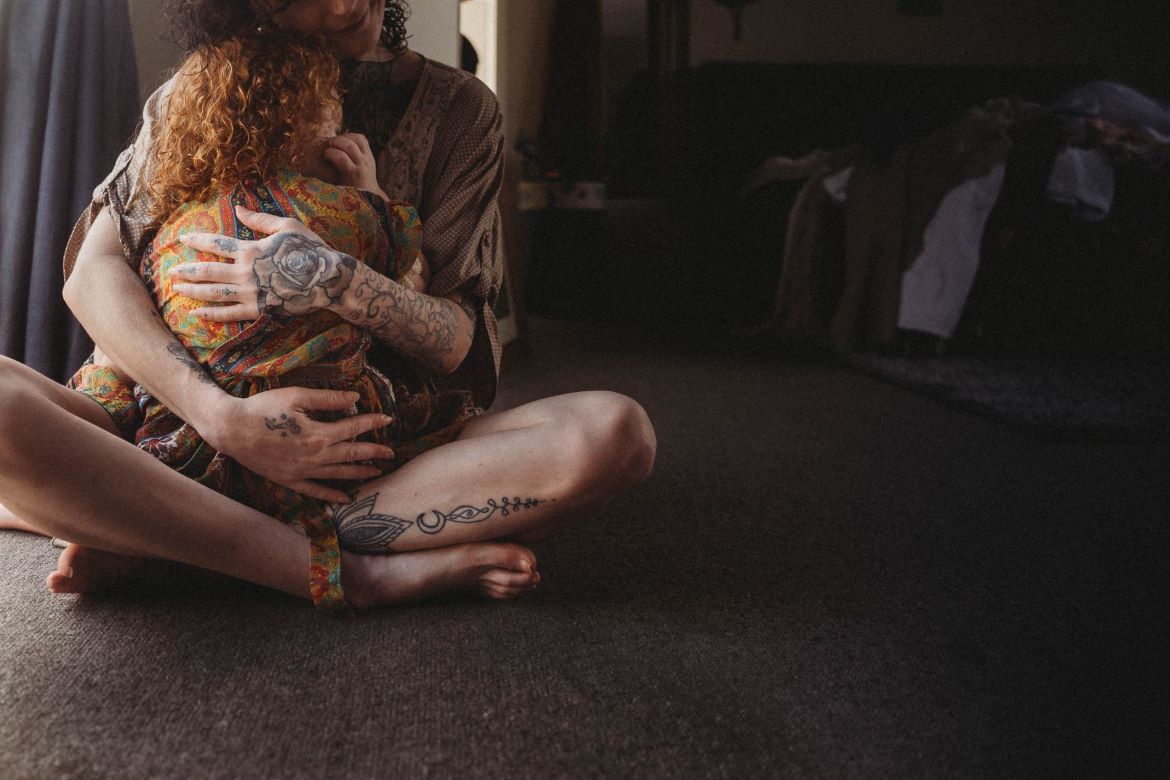By Tracy Cassels
For some parents, it seems no matter what they try, they have a baby who simply resists sleep at all times. These children can easily get overtired or it can take hours to try to get them down. It feels like an ongoing battle for many. Unfortunately, for these parents, a bedtime routine often exacerbates the problem because the cues for sleep are prominent and this leads their young ones to resist even more. The following are some suggestions to try and get parents to stop “trying” to put their little ones to sleep and in the long-run create an environment that’s more conducive to sleep and simply allowing it to happen. A warning that this can take some time for your child to adapt to so you may feel tempted to go back to putting them to sleep, but remember the key here is to help create positive associations with bedtime and if what has been going on until now is causing stress and anxiety, then it’s not likely going to do that.
Calm Yourself First
The very first step is to make sure you’re calm about sleep. After so long with things being difficult, most parents enter bedtime with a pit in the bottom of their stomach. The problem is that this actually increases bedtime resistance as our children are made to pick up on our nuanced behaviours and feelings and our anxiety makes them anxious. We’re silently telling them things aren’t safe and the more attuned our children are, the more likely they are to fight us for sleep because they fear what’s coming. I recommend taking 5 minutes in the evening to do some calming breathing or mindfulness exercises and then re-engaging in these exercises whenever you feel your anxiety rise again around the bedtime period.
Create an Environment Conducive to Sleep
Although bedrooms are often set up properly for sleep, often the rest of the house where the child spends time prior to bed, isn’t. They have baths that are supposed to be calming in bathrooms with bright lights that inhibit melatonin, they play in living rooms with TVs on or lights on full, and so on. The key for sleep is ensuring that all areas the child will be in are conducive to relaxation and sleep. This does not mean everything is pitch black, but rather that earlier in the evening (likely around 6 or 7pm), lights are dimmed around the house, TV is off, perhaps some gentle music is on, but otherwise life continues.
You aren’t forcing your child to wind down, you’re just allowing it to happen.
Also, make sure bath is done ahead of this time period because baths are actually often arousing to children and thus they wake up more and struggle with sleep thanks to the bright lights and tactile stimulation. If you have a bathroom with a dimmer and your child relaxes in the tub, that shouldn’t affect sleep, but otherwise you may want to consider moving bathtime.
Overall, if the environment is conducive to sleep, you may find your younger ones simply asking to be held and nursing/feeding/rocking/being held to sleep away from the bedroom. This is okay! It’s actually quite good if there’s normally resistance because the bedroom may be a trigger for your child so moving away from that can avoid that particular trigger. I often recommend families sit in the living room and take some time around when you’d expect bedtime to just enjoy each other, chat, catch up, play a quiet game, have a glass of wine, and so on while baby/child plays about. This is an ideal way to let everyone remain calm and build up positive associations with sleepiness.
Some people have children that are quite sensitive to stimuli and this can be problematic for bedtime. These children struggle to turn things off and end up fighting sleep but are also frustrated that they can’t sleep because they are taking in too much. For these kids, I recommend spending 10-15 minutes in a dark room with pink noise to help them calm or fall asleep.
If they don’t fall asleep in that time, then come out to the dim environment and allow them to play some more.
Understand Sleepy Signs
Too often families mistake a common sleepy sign for overtiredness, which results in changing bedtimes and more stress overall. It is a biological fact that we as humans have a period prior to when we’re ready for bed where we are more active and alert. For kids, this looks like very hyper behaviour of running around or being more vocal/active (in infancy). This is what happens when the circadian alerting system has to ping hard enough to override the high sleep drive that’s trying to take over. After this period, the sleep drive does take over and sleep is possible, but children have to get this energy out or they will struggle with falling asleep. (Note: kids can become overtired, but this is often marked with a lot of grumpiness not just energy.)
In line with this, people often mistake early tired signs as being indicative that the child is ready for sleep when really these are the same early signs we show as our sleep drive increases and melatonin production rises. We yawn, but that doesn’t mean we’re immediately ready for bed. And of course, if we try to get our kids to sleep too early, it’s harder and they begin to resist more and more and a cycle of hating bedtime begins. I will say that when I hear a family say they have to increase rocking/bouncing and so on to get their child to sleep, it’s often a sign that they are trying to put their child to sleep too early. I recommend waiting an additional 15 minutes to what you would usually do and see how it goes for a few nights, then continue to add 15 minutes as needed.
I realise there is a fine line here but the more you practise looking for this, the easier it becomes.











